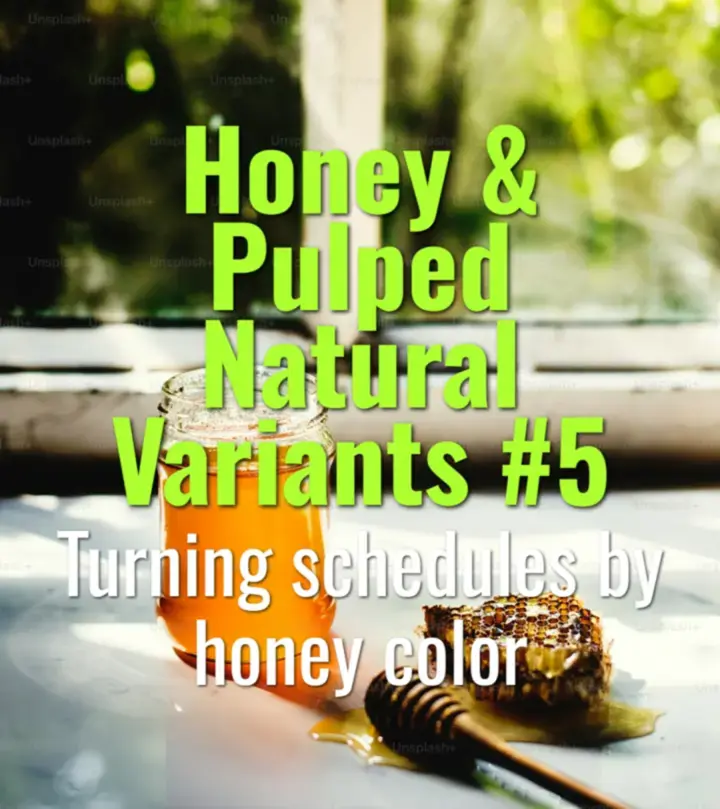Turning schedules by honey color
This topic explains how turning schedules vary by honey process color (white, yellow, red, black), why frequent turning is critical, and how it impacts drying speed, risk, and flavor development.
- Coffee Basics Nerds
- 2 min read
Article 5 of 12 in Honey & Pulped Natural Variants/

Why Turning Matters
- Honey-processed coffees retain varying amounts of mucilage, which slows drying.
- Frequent turning ensures even airflow, moisture loss, and mold prevention.
- Turning frequency differs depending on mucilage percentage (honey color).
Turning Schedules by Honey Color
1. White Honey
- Mucilage: 10–20% retained.
- Turning: Every 2–3 hours during early days.
- Reasoning: Less mucilage → dries quickly; risk of clumping is low.
- Drying time: 7–10 days.
2. Yellow Honey
- Mucilage: 25–50% retained.
- Turning: Every 1–2 hours in the first 3–4 days; then every 2–3 hours.
- Reasoning: Moderate mucilage requires steady management to avoid fermentation pockets.
- Drying time: 10–14 days.
3. Red Honey
- Mucilage: 50–75% retained.
- Turning: Every 30–60 minutes for first 5 days; then every 1–2 hours.
- Reasoning: High mucilage makes beans sticky, prone to clumping and over-fermentation.
- Drying time: 12–18 days.
4. Black Honey
- Mucilage: 75–100% retained.
- Turning: Every 20–30 minutes initially; later every 1–2 hours, often under shade.
- Reasoning: Maximum mucilage requires intensive labor and airflow control to prevent mold and phenolic defects.
- Drying time: 18–25+ days.
Quality Outcomes
- Frequent turning: Uniform drying, clean fruit-forward profiles, stable storage quality.
- Poor turning: Uneven moisture, sour or moldy flavors, loss of specialty grade.
Challenges
- Highly labor-intensive, especially for red and black honey.
- Requires constant supervision and sufficient drying space.
- Climate variability increases difficulty in maintaining schedules.
Lasting Importance
Turning schedules by honey color are essential protocols in honey processing. Proper timing ensures beans dry evenly, maintain sweetness, and avoid defects—allowing farmers to consistently deliver distinct and high-value cup profiles.
You might also like:
- Tags:
- Lasting Importance
- Specialty Grade
- Labor Intensive
- Cup Profiles
- Red Black
- Black Honey
- Fruit Forward
- Honey Processing
- Turning Frequency
- Frequent Turning
- Red Honey
- Yellow Honey
- Prevent Mold
- High Value
- Phenolic Defects
- Climate Variability
- Processed Coffees
- Uneven Moisture
- Slows Drying
- Stable Storage
- Uniform Drying
- Mold Phenolic
- Defects Drying
- White Honey